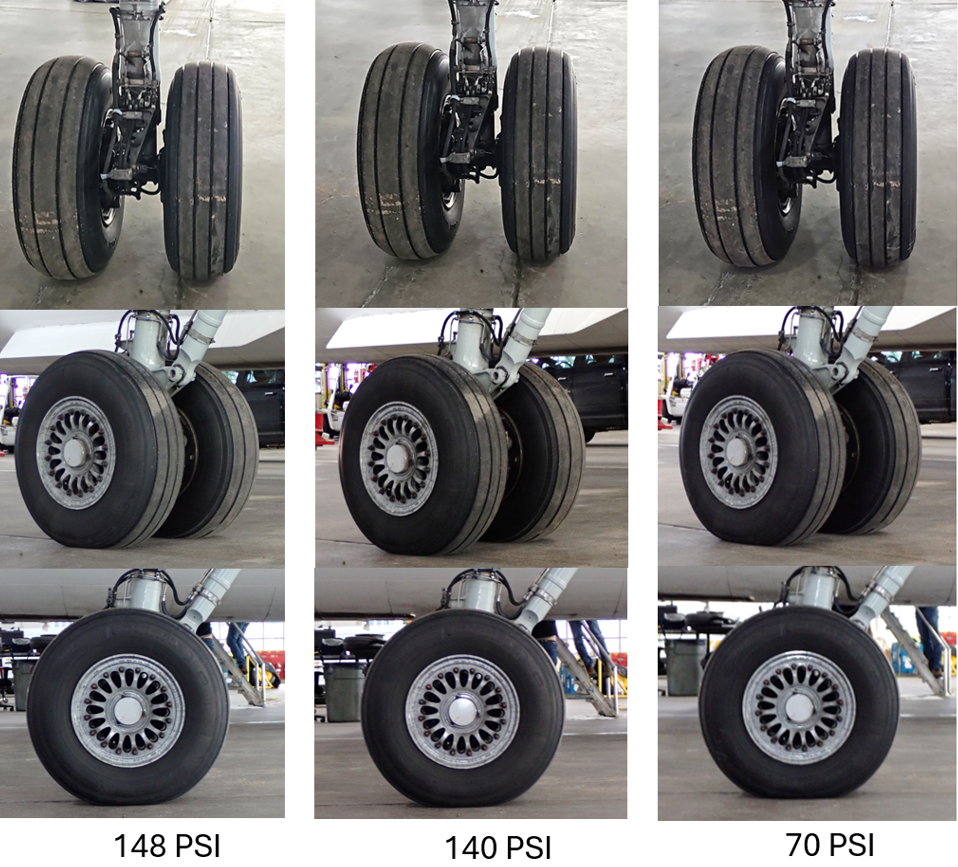Place du Centre, 4th floor
200 Promenade du Portage
Gatineau QC K1A 1K8
July 11, 2025
Director General, Civil Aviation
Transport Canada
At 1936 Atlantic Standard Time on 28 December 2024, the Bombardier Inc.The current type certificate holder is De Havilland Aircraft of Canada Ltd. DHC-8-402 aircraft (registration C-GPNA, serial number 4032) operated by PAL Airlines as Air Canada Express flight 2259, departed St. John’s International Airport (CYYT), Newfoundland and Labrador, bound for Halifax/Stanfield International Airport (CYHZ), Nova Scotia, with 2 flight crew members, 2 cabin crew members, and 73 passengers on board.
During takeoff, the No. 1 main landing gear tire (left outboard tire) failed, leaving tire portions on the runway. Neither the damaged tire condition, nor the tire debris on the runway was noticed, and the flight continued to its destination. When the aircraft touched down on Runway 23 at CYHZ, the damaged tire imbalance led to a vibration that caused the left main landing gear stabilizer brace to become unlocked and, as a result, the left main landing gear collapsed. When the landing gear collapsed, the left propeller contacted the runway surface. The flight crew received a left engine fire indication and activated the engine extinguisher system. The aircraft came to rest on the runway and all passengers and crew members evacuated with no reported injuries. The aircraft was substantially damaged. The Transportation Safety Board of Canada investigation into this occurrence (A24A0087) is ongoing.
The investigation has determined that the main landing gear tire pressure was last checked by the operator on 27 December 2024. The recorded tire pressure for all main landing gear tires was 141 psi when the aircraft was in the weight-on-wheels condition. The published acceptable inflation pressure for the type of tires installed on the occurrence aircraft is 141 to 148 psi when the aircraft is in the weight-on-wheels condition.
Before the occurrence flight, it was noted that the No. 1 main landing gear tire appeared under inflated. However, it was decided that immediate maintenance action regarding a tire pressure check was not required and that maintenance staff at the destination could determine what action was needed.
A post-occurrence examination of the damaged main landing gear tire revealed that increased flexing of the under‑inflated tire during the extended taxi and subsequent takeoff caused internal tire ply separation and eventual rupture damage. The tire subsequently lost rubber material in an asymmetrical manner that caused the imbalance experienced during the landing.
After the occurrence, the TSB investigation team inflated an exemplar tire to different tire pressures to determine if there were changes in the tire’s visual appearance. With the aircraft in the weight-on-wheels condition, differences were negligible in the appearance of the tires when pressurized to 148 psi and 140 psi, and when inflated to a pressure significantly lower than the acceptable range, such as 70 psi (Figure 1). In fact, the investigation team was only able to visually detect a significant change in the tire side wall when the inflation pressure was critically low.
Both the Airplane Flight Manual (AFM) and the Quick Reference Handbook (QRH) for the DHC-8-400 provide landing considerations for a known or suspected main landing gear tire failure. These documents advise the flight crew to promptly decelerate the aircraft to below 80 knots indicated airspeed (KIAS) using anti-skid braking. This is because the landing roll spins up the failed and imbalanced tire, and if the aircraft speed dwells above 80 KIAS, the rotational speed of the imbalanced tire causes a severe vibration at the same or very close to the natural frequencies of the main landing gear. This severe vibration may cause the lock-links to overcome the downlock springs and downlock actuator and unlock the stabilizer brace, resulting in the overload of the retract actuator and subsequent collapse of the main landing gear. Further information on this phenomenon was provided in the aircraft manufacturer’s Flight Operations Service Letter DH8‑ 400‑SL‑ 32‑046 after a previous similar occurrence investigated by the TSB.TSB Aviation Investigation Report A14W0177.
In other previous similar occurrences, the flight crew were aware of the tire failure and were able to perform a normal landing without the landing gear collapsing by quickly decelerating the aircraft to below 80 KIAS. In this occurrence, however, the flight crew were not aware of the main landing gear tire failure; therefore, they did not perform the Main Landing Gear Tire Failure procedure from the AFM and QRH.
The main landing gear tires on DHC-8-400 aircraft have a very strong sidewall, resulting in very little observable deflection when the tire pressure is below its acceptable value. When a DHC‑ 8‑ 400 main landing gear tire appears under inflated, it is likely that the tire is critically under inflated and could result in a tire failure. When a DHC-8-400 aircraft lands with a failed main landing gear tire that is missing a significant portion of material, it could lead to landing gear collapse if the landing is not conducted in accordance with the Main Landing Gear Tire Failure procedure.
The foregoing is provided for whatever follow-up action is deemed appropriate.
The TSB would appreciate being advised of any action that is taken in this regard. Upon completion of investigation (A24A0087) the Board will release its report into the occurrence.
Yours sincerely,
Original signed by:
Craig Johnston
Director of Investigations, Air
Cc.
Civil Aviation Safety Inspector, Airworthiness, Minister’s Observer, Transport Canada
Chief Executive Officer, De Havilland Aircraft of Canada Ltd.
Air Safety Investigator, Air Safety Officer, De Havilland Aircraft of Canada Ltd.
